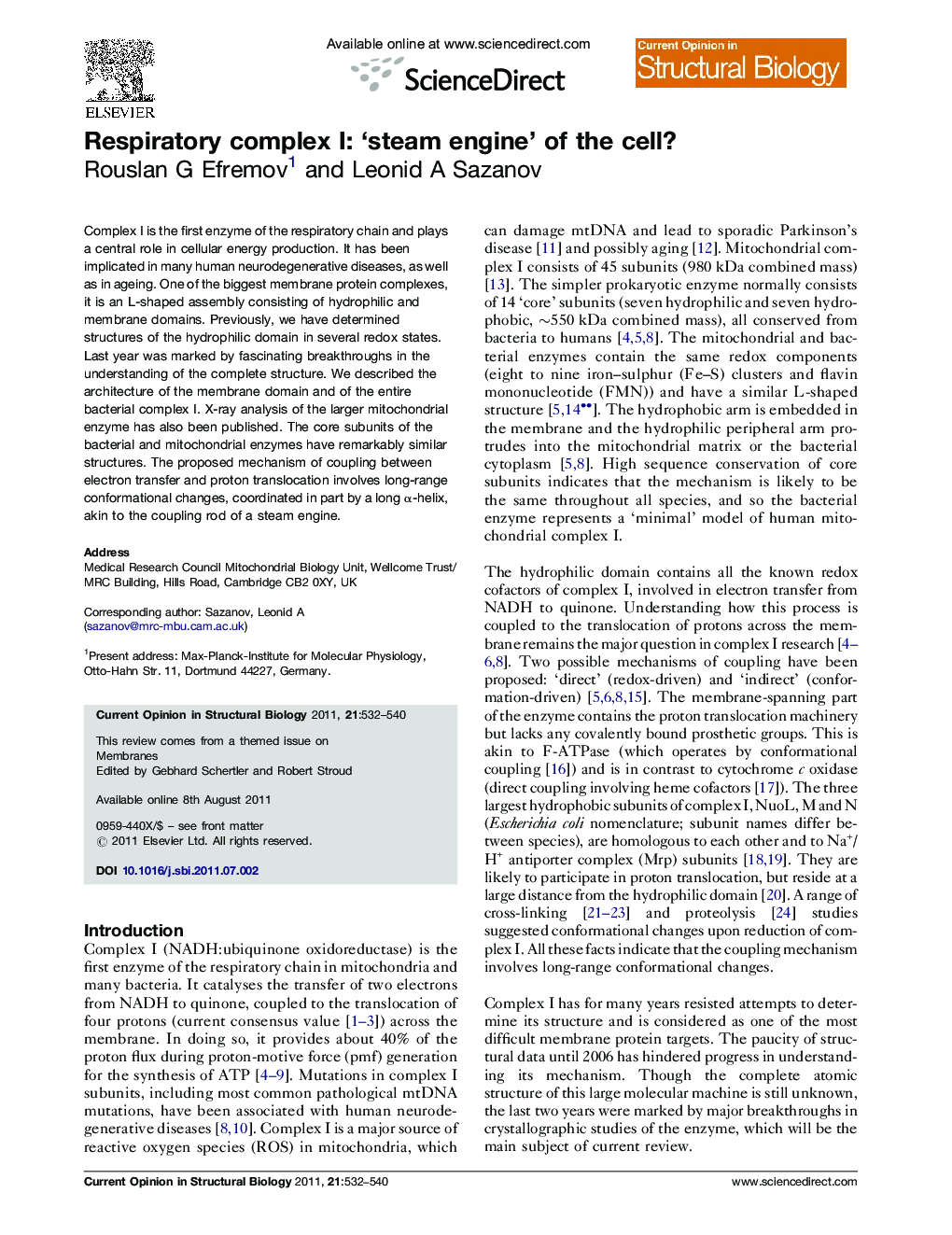| Article ID | Journal | Published Year | Pages | File Type |
|---|---|---|---|---|
| 1979336 | Current Opinion in Structural Biology | 2011 | 9 Pages |
Complex I is the first enzyme of the respiratory chain and plays a central role in cellular energy production. It has been implicated in many human neurodegenerative diseases, as well as in ageing. One of the biggest membrane protein complexes, it is an L-shaped assembly consisting of hydrophilic and membrane domains. Previously, we have determined structures of the hydrophilic domain in several redox states. Last year was marked by fascinating breakthroughs in the understanding of the complete structure. We described the architecture of the membrane domain and of the entire bacterial complex I. X-ray analysis of the larger mitochondrial enzyme has also been published. The core subunits of the bacterial and mitochondrial enzymes have remarkably similar structures. The proposed mechanism of coupling between electron transfer and proton translocation involves long-range conformational changes, coordinated in part by a long α-helix, akin to the coupling rod of a steam engine.
Graphical abstractFigure optionsDownload full-size imageDownload high-quality image (288 K)Download as PowerPoint slideHighlights► Structures of reduced hydrophilic domain show how NADH interacts with enzyme. ► Architectures of the membrane domain and of the entire bacterial complex I determined. ► Mitochondrial enzyme analysed, contains long helix HL similar to bacterial structure. ► Comparison of bacterial and mitochondrial enzymes suggests core subunits are similar. ► Coupling mechanism likely involves conformational changes coordinated by helix HL.
